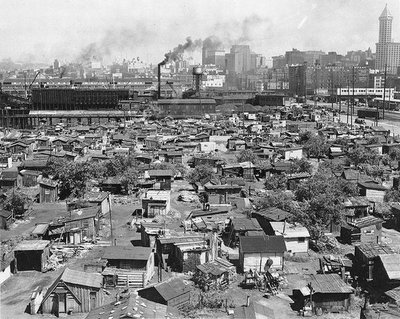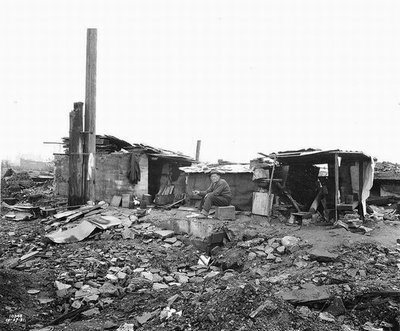January 28, 2010
Students recreate story of Great Depression that transformed Washington
With the escalation of the “great recession” a year ago, University of Washington historian James Gregory started getting telephone calls asking him to compare it to Great Depression of the 1930s. He wondered if students would be interested in doing research projects about the Depression. The answer was a resounding “yes.”
The fruits of that research by nearly 80 UW students and several faculty members are now available to the public to browse through on the Web at http://depts.washington.edu/depress/.
“If you scratch any surface in the state you will come across changes from the 1930s that shape our world. It was a key decade for America in the 20th century and it was pivotal for Washington,” Gregory said. “The Depression hit Washington harder than most places in the country. Unemployment reached 35 percent in the state and was even higher in Seattle. The economy was shattered. An enormous Hooverville, a shanty encampment for homeless men, sprang up, sprawled over nine-and-a-half acres near what is now Quest Field and persisted from 1931 until l941.
“But under the New Deal federal spending transformed Washington. Modern transportation and electrical infrastructure was created and was a key to the manufacturing boom seen in World War II. It changed an economy that had been based on timber to one of airplanes and urban manufacturing,” he said.
The new Web site is collaboration between Gregory’s undergraduate and graduate students and the UW School of Drama. Key participants include Jessie Kindig, a history doctoral student who serves as project coordinator; Sara Nash Gates and Mark Jenkins, drama school professors; and Sarah Guthu, a drama school graduate student who wrote much of the extensive theater content on the site. Gregory directs the project.
More than 40 papers researched and written by students about the Depression are now on the Web site and more are on the way. Some still need editing and art to illustrate them, and a new group of students is at work on new related projects for the site.
Gregory and Kindig said it is difficult to find areas of society that were not altered by the Great Depression and the New Deal. The era saw Republican Washington transformed into a Democratic state, the beginning of political activism that would later affect the civil rights and farm workers movements in the state, and the organizing of the unemployed, which boosted the labor movement. And everywhere in the state there are hundreds of buildings that were funded by the federal government.
“The impact on the arts in Washington was a hidden story,” said Kindig. “The arts just wouldn’t be the same.”
Federal funding supported a wide swath of the arts and Washington was the home of some of the most innovative theater, musical and performance art works in the nation. Two of the iconic artists of depression era, photographer Dorothea Lange and songwriter Woody Guthrie, worked in the state. Lange pointed her camera at migrant farm workers in the Yakima Valley and Guthrie was commissioned to write songs that extolled public utilities and the dams on the Columbia River including “Roll on, Columbia,” which became the state song.
The drama school will present staged readings of two depression era plays next month in the Jones Playhouse, 4045 University Way NE. Clifford Odet’s working class drama “Waiting for Lefty” will be performed at 7:30 p.m. Feb. 18-20 and at 2 p.m. Feb. 21. S.N. Behrman’s satirical “End of Summer” will be staged at 7:30 p.m. Feb. 25-27 and at 2 p.m. Feb. 28.
The new Web site is part of a collection of Pacific Northwest Labor and Civil Rights Projects based at the UW and was funded by a grant from the Simpson Center for the Humanities at the UW.
###
For more information, contact Gregory at 206-543-7792 or gregoryj@u.washington.edu and Kindig at jkindig@.u.washington.edu
More information about the two play readings is available by contacting Kris Bain at the drama school at 206-6850-0600 or krisb@u.washington.edu


